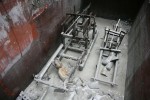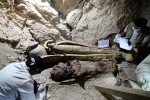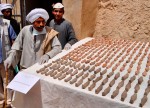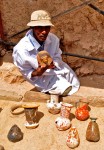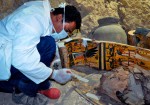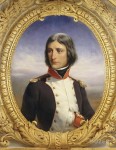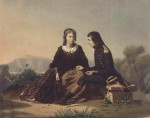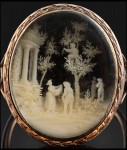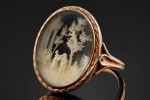 When researchers discovered an escape tunnel dug by Jewish prisoners in the forest of Ponar outside Vilnius, Lithuania, last year, their investigation was filmed by PBS for a future episode of its consistently excellent NOVA series. The NOVA episode premiered on PBS Tuesday, 73 years almost to the day after the escape on Passover night, April 14th, 1944, and it did not disappoint.
When researchers discovered an escape tunnel dug by Jewish prisoners in the forest of Ponar outside Vilnius, Lithuania, last year, their investigation was filmed by PBS for a future episode of its consistently excellent NOVA series. The NOVA episode premiered on PBS Tuesday, 73 years almost to the day after the escape on Passover night, April 14th, 1944, and it did not disappoint.
It opens with an overview of the history of the Jewish community of what was then known as Vilna. This was one of the largest, richest and most culturally important Jewish communities in Europe, even earning the moniker of the “Jerusalem of Lithuania,” not a title that was cast about carelessly. Part of the program is dedicated to the archaeological excavation of the site of the Great Synagogue Complex, obliterated by the Nazis and finished off by the Soviets after the war. The team is hoping to unearth the architectural remains of the mikvah, the ritual bath, but has very little time so it’s quite suspenseful.
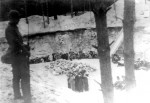 In parallel with the city excavation, the team in the forest seeks evidence of unknown mass graves and to find the escape tunnel in Pit 6 used by the 11 survivors of the Ponar Burning Brigade, a group of 80 Jewish prisoners forced by the SS to dig up tens of thousands of bodies of their loved ones (murdered by Nazis and Lithuanian militia between 1941 and 1944), stack them in alternating layers with logs, pour gasoline on them and burn them to cinders. There are some wrenching photos of these monstrous structures, and NOVA does a compelling job of explaining the sheer scale of this sickening project.
In parallel with the city excavation, the team in the forest seeks evidence of unknown mass graves and to find the escape tunnel in Pit 6 used by the 11 survivors of the Ponar Burning Brigade, a group of 80 Jewish prisoners forced by the SS to dig up tens of thousands of bodies of their loved ones (murdered by Nazis and Lithuanian militia between 1941 and 1944), stack them in alternating layers with logs, pour gasoline on them and burn them to cinders. There are some wrenching photos of these monstrous structures, and NOVA does a compelling job of explaining the sheer scale of this sickening project.
It also illustrates the technology used to find the tunnel very well. They focus on the non-invasive exploration of the site by electrical resistivity tomography (ERT), a technology used by geologists, oil and gas prospectors, but still very new to archaeology. The experts explain how the technology works in the context of this particular site, identifying distinct areas that stand out from the sand all around them. You can’t help but share their excitement as they identify first the exit point of the tunnel, then other points along the expected route of the tunnel which decisively confirm the find.
But the greatest triumph of this program, in my opinion, is the involvement throughout of the children of the escapees. They’re the ones who explain the Burning Brigade’s function, the horror their fathers experienced, how it haunted them for the rest of their lives. This is more than an effective framing device. The whole point of the Burning Brigade was to obliterate all the evidence of Nazi mass-murder, culminating in one last mass-murder of the Burning Brigade members themselves. Once they were dead, there would be nobody left to remember the Nazi atrocities in the Ponar forest. They escaped not just to save their lives, but so that someone would be alive to tell the tale.
The children of the survivors telling the stories they’d heard from their fathers and then being presented with all the evidence discovered by the archaeologists and researchers confirming those stories is not only deeply moving, but a final defeat of the Nazi attempt to cover up their crimes.
In conclusion, watch this show.

